IAnD Exclusive
#KyaBola
By Manoj Kothari
Visual Representations: Courtesy World Wide Web
Read Time: 3 mins
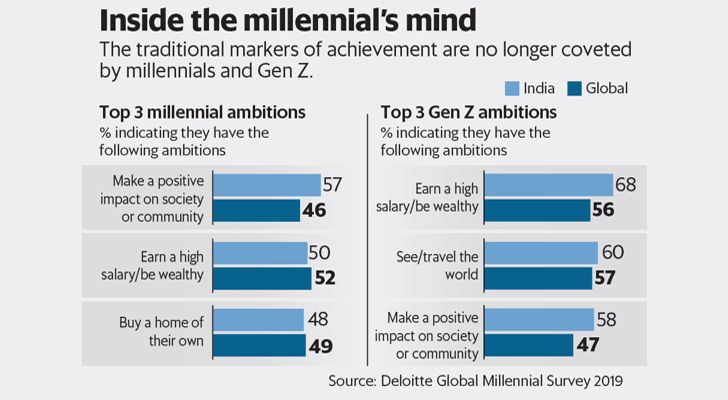 |
| India millennials and GenZ are nearly mirroring global preferences. Making a positive impact on society is high on the agenda |
Design strategist Manoj Kothari decodes the drivers behind bad road manners, lists some engaging activity receptacles and hopes that someone will optimistically refer to positive change…
I live in Pune and I have seen the city change through the past two decades. From a quiet retirement town, it has evolved rapidly into a cosmopolitan city with IT, manufacturing and education at the core. I have seen the honking rising to a peak and, to my surprise, have seen it going down too. Yes, as I cross three signals in my 10km stretch from home to office, I have seen honking levels ‘going down’ significantly over a period. Being a user-behaviour-researcher, I am aware of the change and I do reflect on the potential reason.
Using the design thinking or systemic lens, here are some thoughts and observations.
A broader brush on the problem side - why does this problem of bad road-manners happen in the first place?
- Survival through meagre infrastructure and public facilities i.e. half the time, we as Indian citizens don’t know if the signal is really functioning well; we have seen the state of cycling paths initiatives on the road met with oblivion; we have got used to taking our own decisions, knowing that the ‘system’ is patchy.
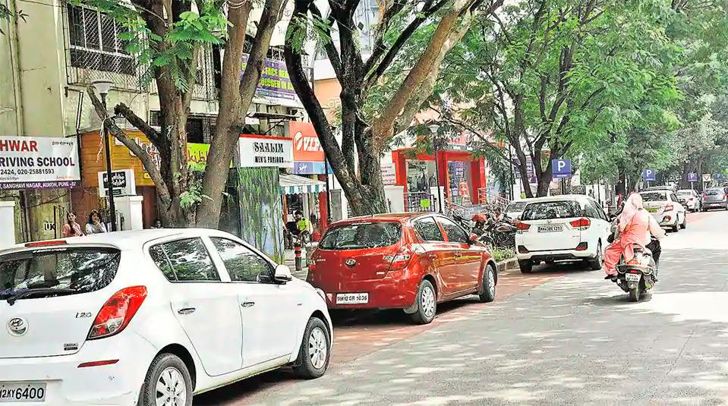 |
| Cars parked on a cycle-track in Aundh, Pune |
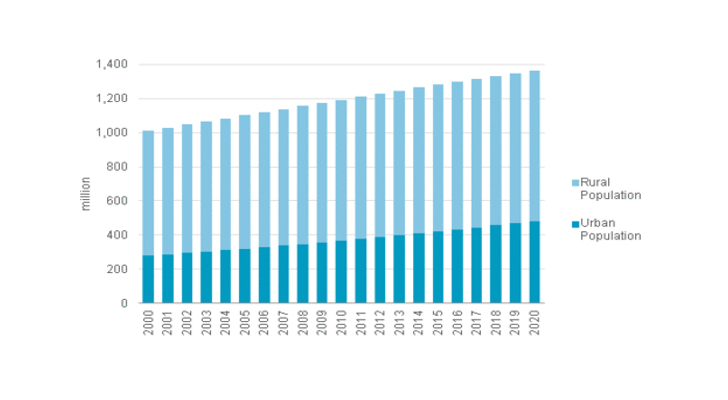 |
| Rising urbanization in India- source Euromonitor |
- Migration from rural to urban areas is happening at an unprecedented speed - nearly 30 people per minute. Many of them take up blue-collar jobs of cab drivers, Zomato couriers etc., struggling to adapt to city mannerisms.
- Rapidly changing technology - before people can grapple with the existing set, and infrastructure can catch up, a new set descends. Mobile telephony has complicated bad driving on Indian roads even further.
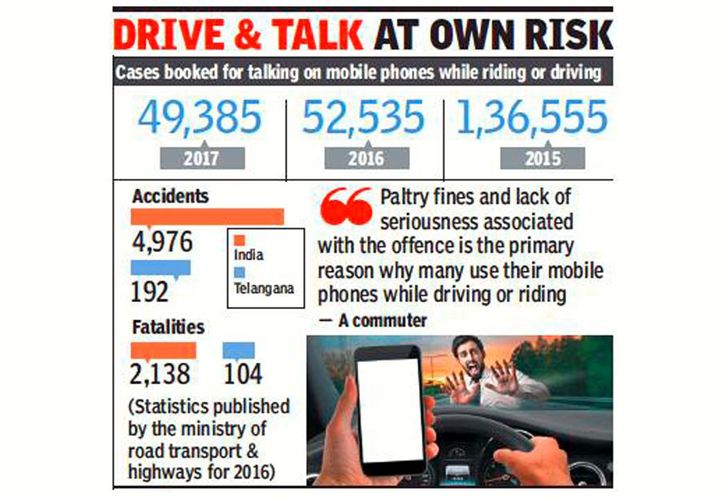 |
Number of
fatalities in India due to using cellphone while driving is more than the ones
due to drunk driving- Source TOI
|
- Low enforcement - Law enforcement on traffic violation is low. Wrong side driving is rampant across Indian cities- much bigger damage causer than the sound pollution.
But there is a palpable change over a period, and we can enhance these signals creatively:
- Evolution of Minimum Effort Commute: Daily long commutes demand that drivers spend their energy in more productive work i.e. listening to a podcast or may be attending to a call through Bluetooth, and just follow traffic discipline for minimum effort. How can commuting be made more productive?
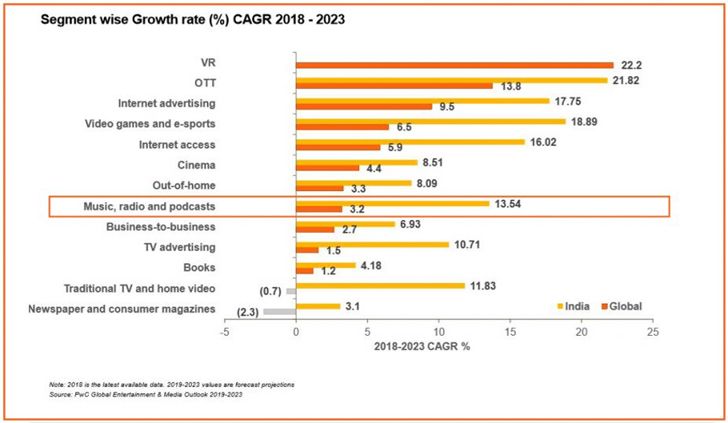 |
| Podcast market is set for non-linear growth 2018-2023 in India compared to rest of the world- Source PwC Global Entertainment and Media Outlook report |
- Rise of the ‘woke’ generation: GenZ and millennials are now ruling the roads. Many of them, if not all, are aware of climate change, gender equality, inclusivity, and other kinds of global issues. They are also changing the road behaviour on the road for the better. How can we engage these ambassadors of change can bring good results to the overall scenario?
- Behaviour design by technology frontiers: Many cities are undergoing smart-city transformation with super upgrade of infrastructure. Jaipur airport to main city access road now has speed-detection cameras all along and just like foreign countries, one gets a challan at home, with the picture of your vehicle on the road, speed and date. And you will be surprised at the discipline there.
- Soon we will be speaking of ‘connected cars’ or ‘connected vehicles’. Every vehicle will be connected to the internet and each other. In a country where the IT sector accounts for nearly 10% if the GDP (overall service sector is contributing nearly 55%), why can’t we take a tech leap to make the vehicles smarter (examples like a bike won’t start if the rider does not wear the helmet).
Can technology help people express their anger more creatively i.e. can the vehicles change their colour to show anger at bad road behaviour?
- City happiness quotient: Blaring music and loud honking also shows frustration amongst the citizenry on the road. Can there be a systemic level solution to make the roads happier? Some cities have seen ‘pedestrian only’ streets and ‘happy streets’. Streets have messages and art that engages people. How can the happiness quotient be increased on the road further?
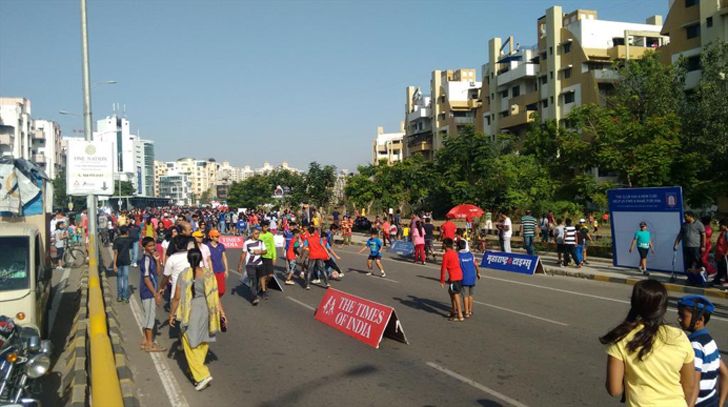 |
| Happy street day in Pune-Pic by Ashish Parkhi |
 |
| Manoj Kothari |
Manoj is a co-founder and chief design strategist at Turian Labs - a research and innovation strategy consulting company based in Pune. Turian Labs works on Design led Innovation strategy and Future Thinking assignment with global organizations like Google, Samsung, Aditya Birla Group, Mahindra group and government of Finland to name a few. Manoj is a visiting professor on innovation at ISB, Hyderabad and NID, Ahmedabad amongst others. He speaks on innovation, design and megatrends based future strategy in several forums. He has authored a non-fiction book 'Skyway Interpreter', a book of poetry ‘Madhurimayan’ and tweets as @lookinbard.


No comments :
Post a Comment